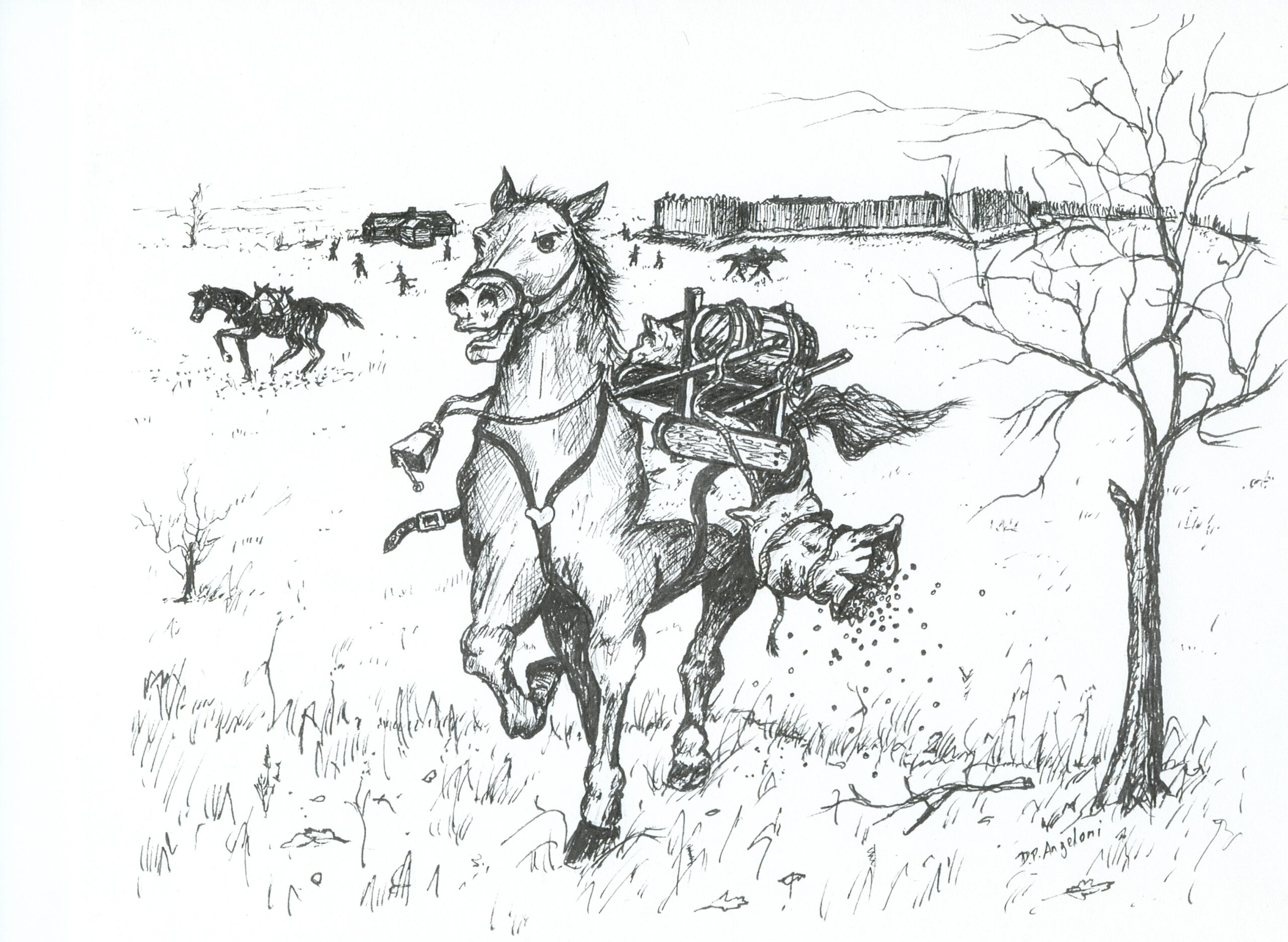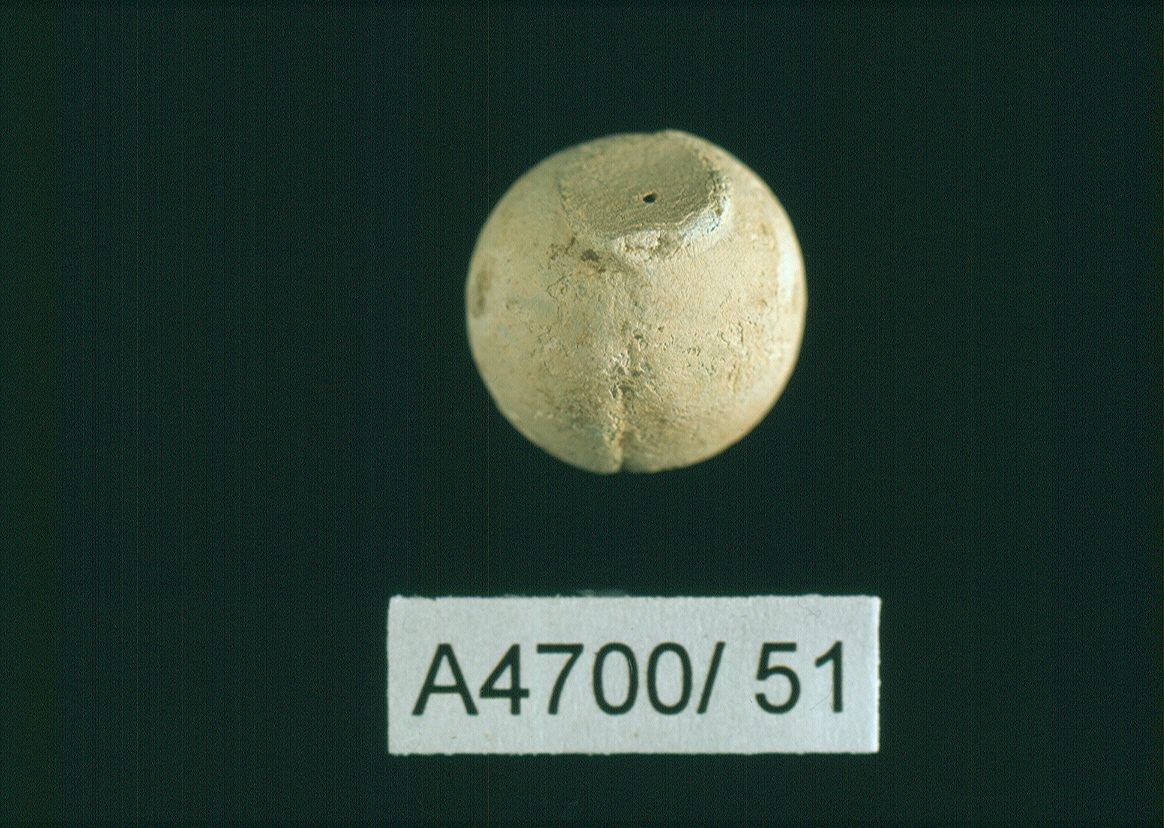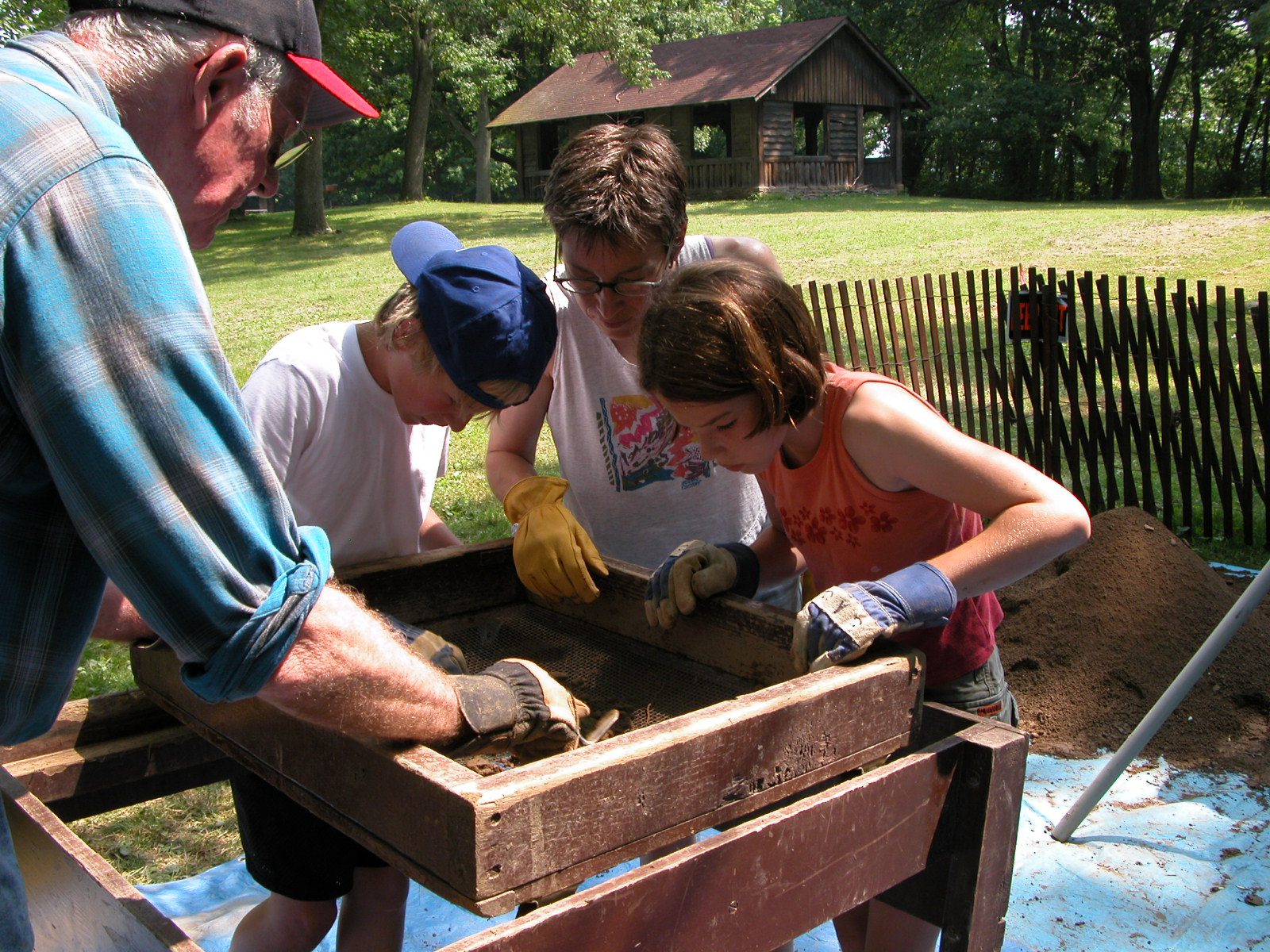
Drawing by Doug Angeloni
In 2004, Ohio History Connection (OHC) archaeologists and dedicated volunteers moved 50,000 pounds of dirt during an excavation of a musket ball concentration at Ohio’s only Revolutionary War period fort site, Fort Laurens State Memorial in Bolivar, OH.
The concentration was discovered through metal detecting investigations by the Center for Historic and Military Archaeology’s (CHMA) in 1999-2000. OHC’s 2004 investigation wanted to define the area of the musket ball concentration and determine if it was the result of one of two very notable events that took place at Fort Laurens before its abandonment in August of 1779. The first of these was the ambush and massacre of a work detail leading to a month-long siege of the fort in the early winter of 1779. The second incident was the disastrous loss of a supply pack train and its much-needed provisions. These two incidents have come to define the unfortunate history of the outpost.
Fort Laurens was erected in the late fall of 1778 as part of an anticipated American campaign across northern Ohio designed to both neutralize the pro-British Wyandottes and put the American army in a position to make a strategic move against the British stronghold at Detroit. The construction was largely completed by early December 1778 and a garrison of about 170 soldiers was left to man to it.
By mid-February 1779, Fort Laurens had been quietly surrounded by a force of 120 American Indians led by the loyalist partisan Simon Girty and a small number of British Regulars out of Detroit. On the morning of February 23rd a work detail, sent out to round up stray horses to draw firewood, was attacked just south of the fort. Seventeen members of the detail were killed and two taken prisoner. The ambush took place within view of those in the fort but probably out of the effective range of covering musket fire. Later that day, the American Indians employed a successful ruse de guerre of continually moving single file in a large circle through the prairie where the ambush had taken place before passing behind a small hill. After emerging in the open again, they would once more fall into line and rejoin the procession. This went on long enough to convince those in the fort that they were facing an enemy whose numbers approached 850 people. Fearful for their own safety, those in the fort were either unwilling or unable to come to the aid of the ambushed detail and the dead soldiers were left where they had fallen. The investment of the fort continued for another month through a particularly brutal winter and reduced the besieged garrison to the point of exhaustion and near starvation.
The second critical event in the fort’s history occurred four weeks after the ambush, on March 23rd, as a relief column headed by General McIntosh finally reached Fort Laurens. In celebration of the supply details arrival, several of the fort’s soldiers joyfully fired their muskets in the air. A distinct and unanticipated effect of the gun fire was to startle the pack animals, causing them to bolt and scatter the much-needed supplies in all directions from the fort. Ironically, the American Indians had quietly broken off their siege for lack of provisions nearly a week before. McIntosh was appalled at the lack of discipline shown by the forts garrison and the spectacle of the pack train stampede. He angrily ordered the lost material be recovered before any of the remaining provisions were dispersed or food rations handed out to the garrison. It is unknown how much if any of the scattered supplies were secured.

Pristine, unfired musket ball with casting seam and sprue
In 2004, a total of 275 artifacts were recovered from OHC’s 6-meter by 6-meter excavation unit. Artifacts consisted of 2 metal fragments, 2 projectile points, 2 utilized chert flakes, 39 chert debitage, 4 stone artifacts, 3 unidentified chalky objects and 223 lead items.
After analyzing the lead assemblage from both the CHMA and OHC projects, it was discovered that the ammunition was, for the most part, pristine. As an example, this is a typical .59 caliber ball with casting seam down the center and sprue cut (the cut off excess from the casting process) at the top. Had this been shot, it would not be as round and well defined as it is. The recovered lead artifacts include .69 caliber musket balls (n=85); .59 caliber rifle/trade gun rounds (n=33); .36 caliber buckshot (n=48); .25 caliber buckshot (n=37); .54 caliber spent rifle/trade gun rounds (n=3) and 71 other lead scraps from the manufacturing process.
So, to answer the question as to whether these lead artifacts are associated with the ambush or pack animal stampede, we looked at the information that presented itself.
Weighing all the available information, we concluded that the lead recovered in both the Center for Historic and Military Archaeology’s and Ohio History Connection’s investigations were the result of the March 23, 1779 pack animal stampede.

Volunteers screening dirt, looking for artifacts
Work like this cannot be done alone, it takes the talents and assistance of many people and we want to take this opportunity to thank them: Doug Angeloni, Jarrod Burks, Mike Dull, Tom Hornbrook, Kathy Fernandez , Friends of Fort Laurens, John Gabel, Tim Jeandrevin , Anna, Karen and Marcelo Leone, Shane Maus, Weldon Mortine, Kira Mullen, Larry Nelson, Cass Noturno, Ron Pfouts, Tom Pieper, G. Michael Pratt, Roy Raber, Lynette Reiner, Richard Stambaugh, Don Stone, Debbie Szcrokman.